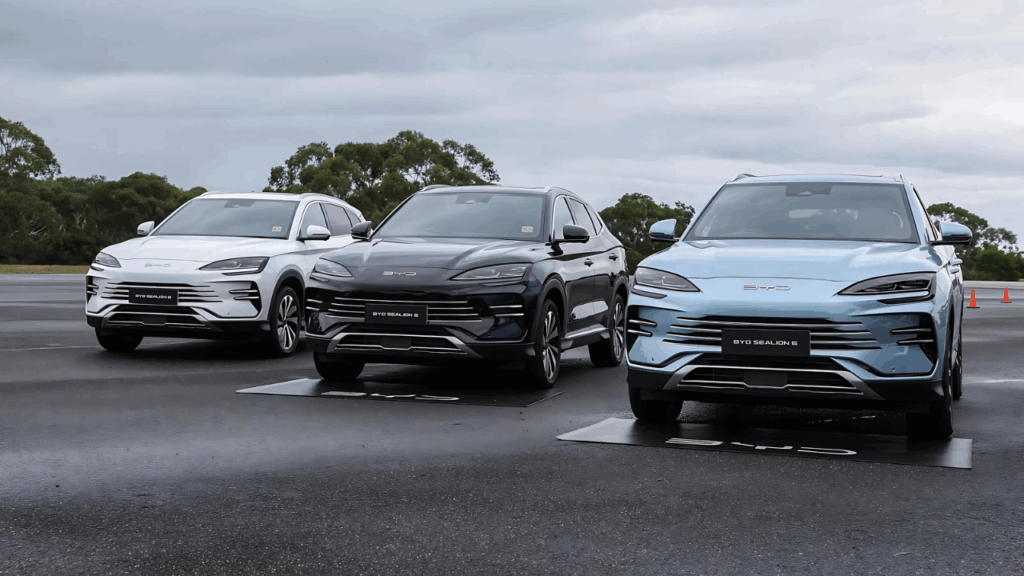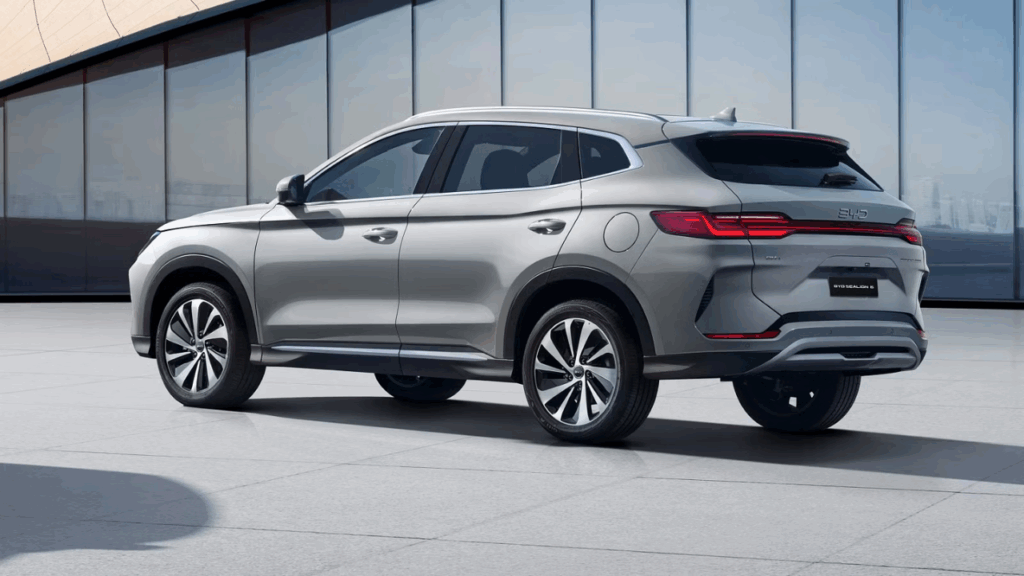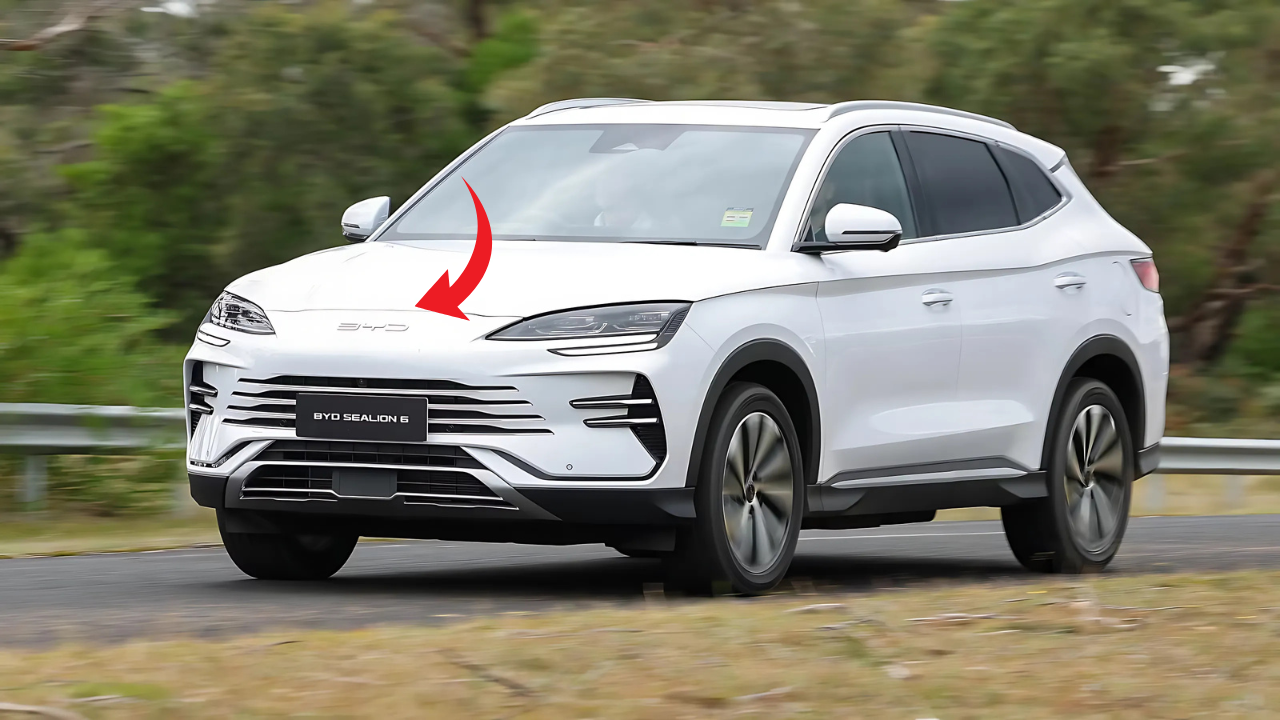Bottom Line Up Front

The BYD Sealion 6 has officially become Australia’s best-selling plug-in hybrid vehicle, delivering 6,198 units in 2024 and narrowly outselling the long-reigning Mitsubishi Outlander PHEV (6,126 sales). Even better news for buyers – BYD just slashed $3,000 off the entry price with a new Essential model starting at $42,990, making it Australia’s cheapest PHEV.
This isn’t just another sales story. We’re witnessing a proper shake-up in the Australian car market, where a Chinese newcomer has dethroned an established Japanese favourite in less than seven months.
🚗 The Numbers Game: How BYD Crushed the Competition
Here’s what makes this victory so impressive. The Sealion 6 only debuted on Australian sales charts in June 2024, recording 482 deliveries in its first month. By December, it had done something remarkable – it cracked Australia’s top 20 best-selling vehicles for the first time, ranking 18th overall with 1,122 sales in December alone.
That put it ahead of established favourites like the Mazda BT-50 and Hyundai i30. For a Chinese PHEV to achieve this in its debut year? That’s genuinely impressive stuff.
Market Share Breakdown
The PHEV segment is still relatively small – about 23,000 PHEVs were sold in Australia during 2024. But here’s the kicker: PHEV sales jumped 120.5% compared to 2023, making it the fastest-growing alternative fuel segment.
Early 2025 data shows PHEVs surged by an incredible 305.92% ahead of the government’s FBT exemption removal on April 1. Smart buyers rushed to secure their tax-free PHEV before the deadline.
💰 Pricing That Actually Makes Sense
Let’s talk money because that’s where BYD really flexes its muscles. The new 2025 BYD Sealion 6 Essential starts at $42,990 before on-road costs, a $3,000 reduction from the previous Dynamic model.
Compare that to the competition:
- Mitsubishi Outlander PHEV ES: $57,290
- Toyota RAV4 Hybrid: $42,260 (but no plug-in capability)
- BYD Sealion 6 Premium AWD: $52,990
The value proposition is crystal clear. You’re getting plug-in hybrid technology at nearly hybrid pricing.
What You Get for Your Money
Don’t think “cheaper” means “stripped out.” The Essential trim still includes autonomous emergency braking, cross-traffic alert, lane support systems, 360-degree camera, panoramic sunroof, powered tailgate, heated front seats, 15.6-inch rotating touchscreen, and 19-inch alloys.
That’s a seriously loaded SUV for under $43k. Most conventional petrol SUVs with half these features cost more.
⚡ Technical Deep Dive: The Hybrid System That Works
Here’s where the Sealion 6 gets interesting from a tech perspective. It uses an 18.3kWh Blade lithium iron phosphate (LFP) battery working with a 1.5-litre turbocharged hybrid engine.
The front-wheel-drive Essential produces 160kW/300Nm combined power. Electric-only range sits at 92km on the NEDC cycle, with claimed fuel consumption of just 1.1L/100km.
Real-World Performance
During real-world testing, one reviewer covered 80km on pure electric power before switching to hybrid mode, achieving an average fuel consumption of 5.3L/100km over 250km of mixed driving. That’s genuinely impressive for a medium SUV.
The 0-100km/h sprint takes 8.5 seconds in the Essential, while the Premium AWD drops that to 5.9 seconds thanks to its additional electric motor.
🏆 Why This Matters for Australian Buyers
This isn’t just about one car beating another. The Sealion 6’s success represents several important trends reshaping our car market.
Chinese brands are getting serious. BYD’s total Australian sales hit 20,458 units in 2024, a 64.5% increase over the previous year. They’re not just throwing cheap cars at the market – they’re delivering genuinely competitive products.
The PHEV Sweet Spot
PHEVs solve the range anxiety problem that still affects pure EVs. With the Sealion 6, you get nearly 100km of electric driving for daily commutes, plus the security of a petrol engine for longer trips.
Total range exceeds 1,000km when combining electric and petrol power. That’s road trip capability without charging infrastructure stress.
🔧 Practical Ownership Considerations
Warranty coverage is solid: six-year, 150,000km vehicle warranty plus eight-year, 160,000km battery warranty. That’s competitive with established brands and shows BYD’s confidence in their technology.
Service network is expanding rapidly through EVDirect’s growing dealer network. This was a legitimate concern for early Chinese car buyers, but BYD is addressing it seriously.
Safety Credentials
The Sealion 6 earned a five-star ANCAP safety rating based on Euro NCAP testing. It’s not just cheap – it’s properly engineered for Australian conditions.
📊 2025 Market Outlook: What’s Next?
The timing couldn’t be better for BYD. Pure electric vehicle sales dropped to just 4.9% of the market in March 2025, down from 9.5% the previous year. Australian buyers want electrification, but they’re not ready to go fully electric yet.
PHEVs bridge that gap perfectly. While battery EVs declined 26.8% in early 2025, PHEVs surged over 300%.
Competition Heating Up
BYD isn’t resting on their success. The brand is launching the larger Sealion 7 electric SUV to challenge the Tesla Model Y, plus the Shark 6 PHEV ute. They’re building a complete lineup to challenge established players.
Mitsubishi won’t give up the PHEV crown easily, and Toyota’s rumoured RAV4 PHEV could shake things up significantly.
🛣️ The Driving Experience: Does It Deliver?
Beyond the numbers, how does the Sealion 6 actually feel to drive? The hybrid transition is smooth and virtually imperceptible. The electric motor provides instant torque for city driving, while the petrol engine kicks in seamlessly for highway cruising.
Interior space is generous for a medium SUV. Boot capacity hits 574 litres, which is middling for the segment, but the lack of a spare wheel (just a repair kit) is disappointing for rural drivers.
Technology Integration
The 15.6-inch rotating touchscreen is genuinely useful, not just a gimmick. Portrait mode works better for navigation, while landscape suits media and vehicle settings. Wireless Apple CarPlay and Android Auto come standard across the range.
💡 Should You Buy One?
If you’re shopping for a family SUV and want to dip your toes into electrification without range anxiety, the Sealion 6 makes compelling sense. The value proposition is outstanding, the technology works well, and the warranty coverage provides peace of mind.
Best for: Urban families wanting lower running costs with occasional road trip capability.
Consider alternatives if: You need maximum boot space, prefer established brand networks, or want a spare wheel.
🔮A Game Changer

The BYD Sealion 6 deserves to be Australia’s best-selling PHEV. It proves that Chinese brands can deliver sophisticated technology at accessible prices without compromising on safety or features.
This success story signals a broader shift in Australian automotive preferences. Buyers want practical electrification at realistic prices, and BYD is delivering exactly that.
The Mitsubishi Outlander PHEV had a good run, but the new sheriff in town offers better value, more technology, and lower running costs. That’s a combination that’s hard to beat in today’s market.
📋 Quick FAQs
Q: How much does the 2025 BYD Sealion 6 cost?
A: Essential model starts at $42,990, Premium AWD costs $52,990 before on-road costs.
Q: What’s the electric driving range?
A: 92km on the NEDC test cycle, with real-world figures around 80km.
Q: Is it reliable?
A: Comes with 6-year/150,000km vehicle warranty and 8-year/160,000km battery warranty.
Q: When are deliveries starting?
A: March 2025 for the new Essential model.
Q: Does it have all-wheel drive?
A: The Essential is front-wheel drive only; Premium model offers all-wheel drive.

